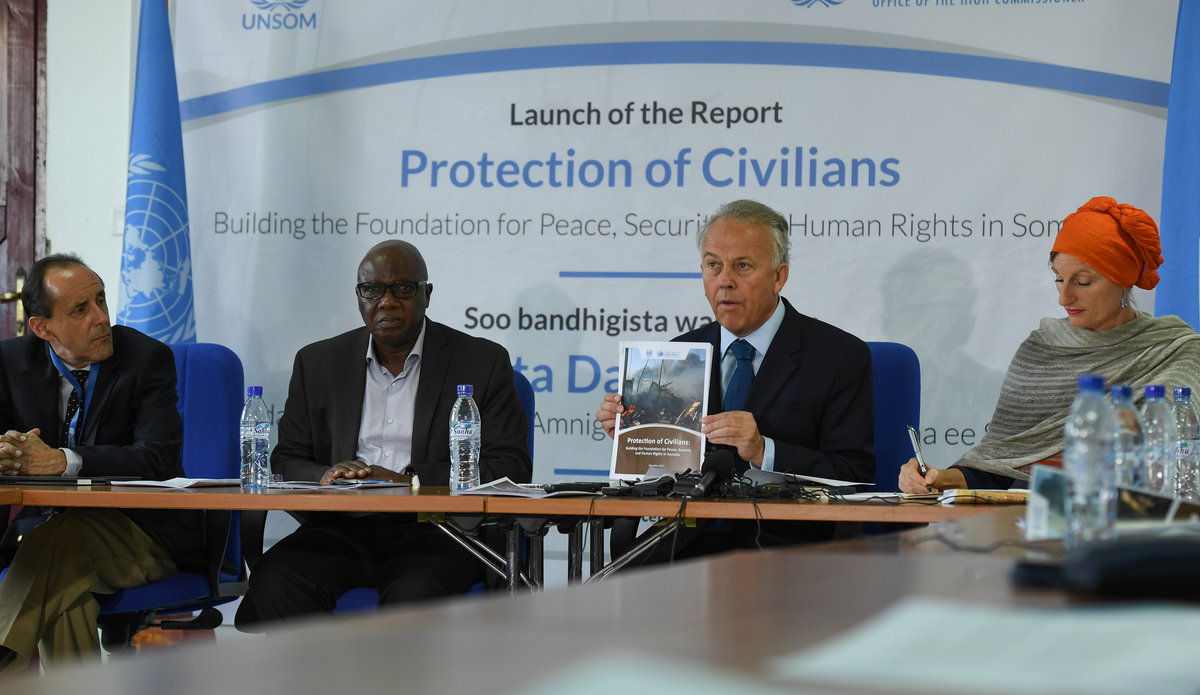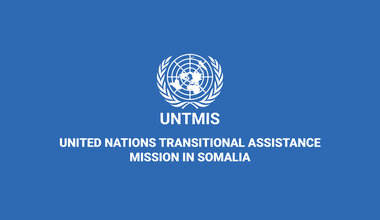Civilians paying a heavy price for armed conflict in Somalia – UN report
Mogadishu – Al-Shabaab militants continue to pose the biggest threat to civilians in Somalia, according to a new UN report that was launched in the Somali capital today.
The report, which was issued to coincide with the international observance of Human Rights Day, attributes 60 per cent of all civilian casualties in Somalia over the last 20 months to attacks by Al-Shabaab militants.
Militias, state actors and the African Union Mission in Somalia (AMISOM) were responsible for 28 per cent of civilian casualties, according to the report, which was released by the United Nations Assistance Mission in Somalia (UNSOM) and the Office of the UN High Commissioner for Human Rights. The report notes that casualties attributed to the Somali National Army and Police and AMISOM were significantly lower during the reporting period than those attributed to Al-Shabaab.
Entitled “Protection of Civilians: Building the Foundation for Peace, Security and Human Rights in Somalia”, the report documented 2,078 civilian deaths and 2,507 injuries between 1 January 2016 and 14 October 2017.
The report says 729 civilians were abducted by Al-Shabaab during the same period, of whom 403 were reportedly released. Al-Shabaab was also responsible for 86 targeted assassinations and executed another 46 persons during the reporting period.
“So, they (Al-Shabaab) are by far the worst, when it comes to activities that kill civilians in conflict. And of the incidents attributable to Al-Shabaab, 79 per cent are a result of the use of Improvised Explosive Devices (IEDs),” Michael Keating, the Special Representative of the UN Secretary General (SRSG), for Somalia, told journalists during the launch of the report.
A significant number of civilian casualties – 251 killed and 343 injured - was attributed to clan militias engaged in conflicts in areas where federal or state security forces were largely absent. The main trigger of these conflicts was disputes over land and resources, the report notes.
“The reality is ugly,” said Mr. Keating. “Too many young Somalis in particular and civilians are dying as a result of military activity (because) people are using violence to achieve their political objectives.”
He described the 14 October bombing in Mogadishu that killed at least 512 people as “the worst example of civilian deaths” in Somalia. “Sadly, its impact will be felt for a long time,” said the SRSG.
In keeping with international humanitarian law, the report states that primary responsibility for protecting civilians lies with the parties involved in the conflict and the Somali government.
The report considers the implementation of a political agreement on Somalia’s National Security Architecture – reached by the Federal Government and the Federal Member States last April – as fundamental to achieving sustainable security sector reform.
The report states that the agreement on a national security architecture provides an opportunity to ensure that Somali-led security institutions are accountable and can protect the country’s citizens in accordance with International Human Rights Law and International Humanitarian Law.
 UN
UN





